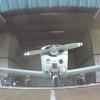Landing a Mooney - Safety Culture
-
Members Online
- PeteMc
- hubcap
- ottorecker
- gabez
- Deb
- UteM20F
- Kirch56H
- billy hellcat
- ta2too
- MaxwellSmart86
- Johnny U
- DonMuncy
- FlyingScot
- 1967 427
- eman1200
- Thedude
- Ragsf15e
- Weston
- exM20K
- triple8s
- takair
- N201MKTurbo
- TCC
- varlajo
- Rwsavory
- Patrick Horan
- McMooney
- Brent
- 201Mooniac
- Andy95W
- Doc Mike
- VetRepp
- GMBrown
- Rmnpilot
- StParkin
- gsoyka
- bixmooney
- Bolter
- Joe Linnebur
- bluehighwayflyer
- hammdo
- ArtVandelay
- 201er


Recommended Posts
Join the conversation
You can post now and register later. If you have an account, sign in now to post with your account.